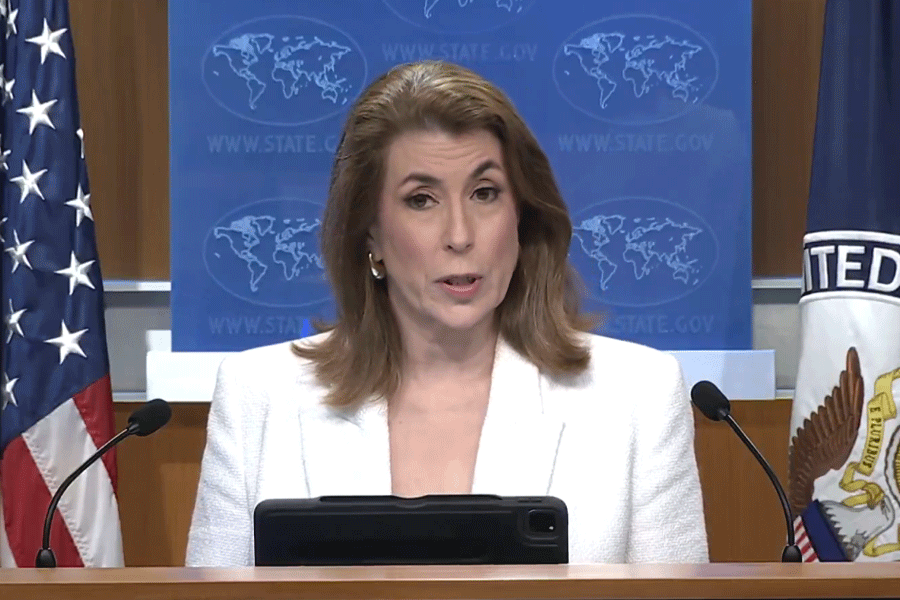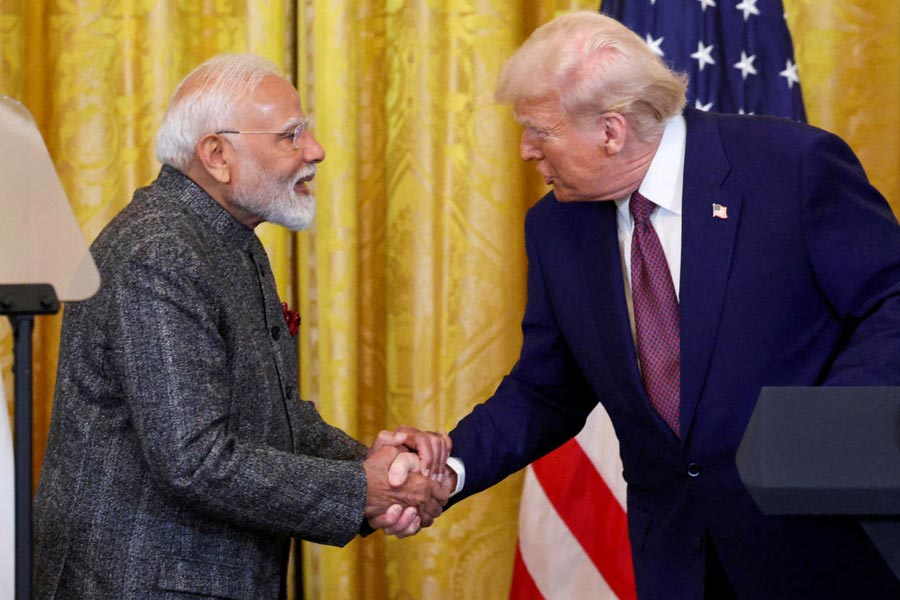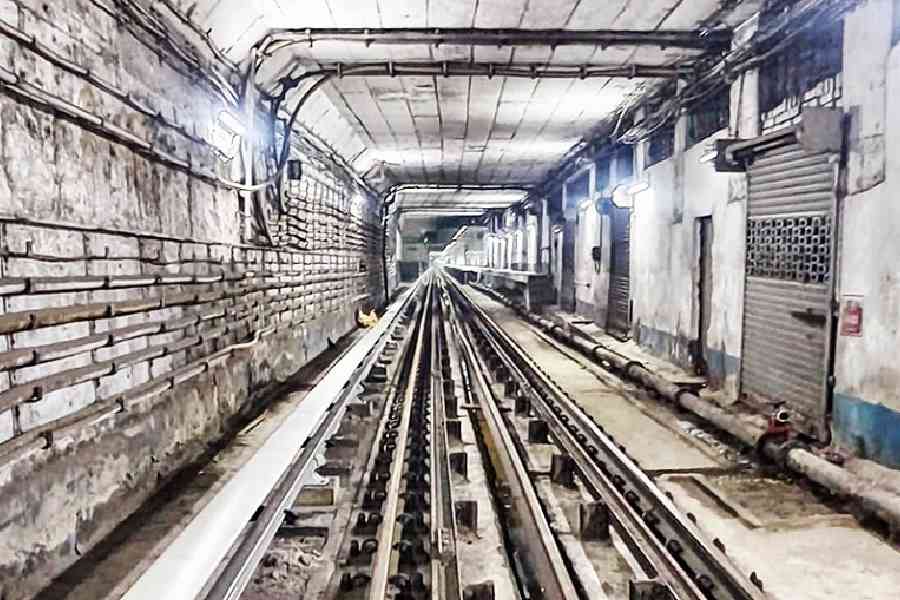 |
| Sabyasachi Chakraborty at a photography exhibition in Nandan |
Star theatre has been privatised and is reborn as an entertainment hub in the heart of north Calcutta. To resuscitate Rupayan, its sound studio has passed into private hands. The tattered Technicians Studio is the subject of a tug of war between the government’s privatisation plans and the fear factor of the artistes and technicians. But there’s no missing the writing on the studio wall: privatise or perish.
Next in line… Nandan? Already, Kurosawa has given way to Krrish at Buddhadeb Bhattacharjee’s favourite hangout.
So, is it just a matter of time before Nandan — its premises if not the screen zone— opens its doors to private enterprise? Metro explores.
Why was Nandan set up?
The city’s first multiplex, Nandan comprises three auditoriums, a library and an archive named after the man who patronised and also inaugurated the film centre on September 2, 1985 — Satyajit Ray. The maestro was the chairman of Nandan from its inception until his death in 1992. Later, Utpal Dutt and Anil Chatterjee held the post. Film-maker Tarun Majumdar is the present chairman.
The Project Report published by Satyajit Ray Archive and Production Centre says Nandan was set up by the government with “a view to creating an institution to disseminate film culture to the avid buffs and serious culture workers”.
For Calcuttans, though, Nandan has come to mean more than just good films. It’s more a lair for lovers, a getaway for college-goers and a hangout for those with a lot of idle time. Free space comes at a premium outside the auditorium — couples of all ages huddling together, families munching chop-cutlet, men perched on railings to leer at women…
While there’s a house full outside, the empty auditorium suits the few who turn up to catch a show just fine. Not many are “avid buffs”— after all, two hours of togetherness in air-conditioned comfort comes dirt cheap at Rs 30-50, in the heart of the city.
 |
| Hot hangout: The Nandan complex as it is now. Picture by Aranya Sen |
At what cost?
Sources in Nandan peg the annual drain from the government’s coffer at close to Rs 1.75 crore, which is just the running cost of Nandan. The recovery from screenings has been nominal through the years. “The establishment charges and the salaries put together are so huge that it’s not possible to recover the amount even if Nandan goes house-full,” asserts a former employee.
Bridging the revenue-expenditure gap is a mirage when subsidy is the motto.
Happy hire
Among the three auditoriums, the 1,000-seater Nandan I is “earmarked for commercial screening”, says CEO Nilanjan Chatterjee. The low-capacity Nandan II and III are used for “promoting film culture”, by hiring them out to film societies and film-related organisations at hugely subsidised rates.
The 200-seater Nandan II comes for Rs 2,000 per show (i.e. two-and-a-half hours), and registered film societies enjoy an additional “50 per cent off”. Nandan I is rarely hired out, but when it is the rent is Rs 10,000 per show.
“Nandan works out cheap for us. The other options are Sarala Ray Memorial hall and Shri Shikshayatan College, which have higher rates and fewer facilities,” says the member of a registered film society.
Bollywood as bailout
The middle path out of this money mess is to ditch the niche and marry the blockbuster. Black and Rang De Basanti have led the charge of the Bollywood brigade through the precious portals of the city’s culture hub. And now there’s no stopping the mainstreaming of the Nandan screen. Having run Krrish for two weeks, it is now showing Omkara.
The Bollywood bug seems to have driven away the ‘arty’ Bengali fare as well. There’s not a single offer from Bengali films and Chatterjee has just turned away the distributor of Naksha who felt the Sunny Deol-Sameera Reddy starrer would run full house at Nandan.
The irony in the ayes and nays of Nandan is lost on none. “I have to run the hall. Right now, I don’t have any offers of Bengali films. So what do I do? Since I don’t have an alternative, I would choose the best from the Hindi fare. Clean films that everyone can see,” defends Chatterjee.
The fact lies in the figures. A Rang De Basanti runs to an average occupancy of 80-90 per cent, while a Manush Bhoot (the last Bengali film to be screened at Nandan, for two weeks in August) finds more than half the hall empty.
Tickets come dirt cheap
But if that indeed is the revenue stream, why subsidise Bollywood and offer a blockbuster at half the multiplex rate, that too after a month’s lag? Rang De Basanti tickets, for instance, went for Rs 180/Rs 150 at INOX Forum in the first week. At Nandan, it cost the cine-goer no more than Rs 50.
“Ticket rates won’t be increased in order to benefit the middle and lower-middle class audiences. You can’t compare Nandan with multiplexes. The government won’t compete with them because the idea is to promote film culture,” stresses the Nandan CEO.
Sound logic: subsidise Bollywood films to “promote film culture” while the government exchequer haemorrhages.
Time to walk privatisation talk?
Together with Rabindra Sadan, Bangla Akademi, Sisir Mancha and Calcutta Information Centre, the high-profile address at 1/1 AJC Bose Road eats up more than six acres of prime land.
If Star theatre is re-inventing itself with a medley of films, theatre, cafeteria, band music and food plaza, despite being on Bidhan Sarani, there’s no doubt Nandan will spark a scramble among investors if it does walk the go-private path.
“Nandan is prime location and the area would be lucrative for any good retail venture. The prevailing market rate in the Chowringhee area would be Rs 80 lakh per cottah,” says Pawan Agarwal of NK Realtors when asked for an estimate.
Six acres translate into 360 cottah of land, a sizeable chunk of which is wasted as a hot spot for idling.
Pradip Chopra, former secretary of Credai (Bengal), the nodal body of builders, feels privatisation is the way out for Nandan. “The subsidies are a huge burden on the government. Right now, we have not explored the full commercial potential of Nandan. Within the parameters of the conditions that the government would lay down, there would be a lot of revenue-generating possibilities for a private player to explore,” stresses Chopra.
Is Buddhababu listening?










